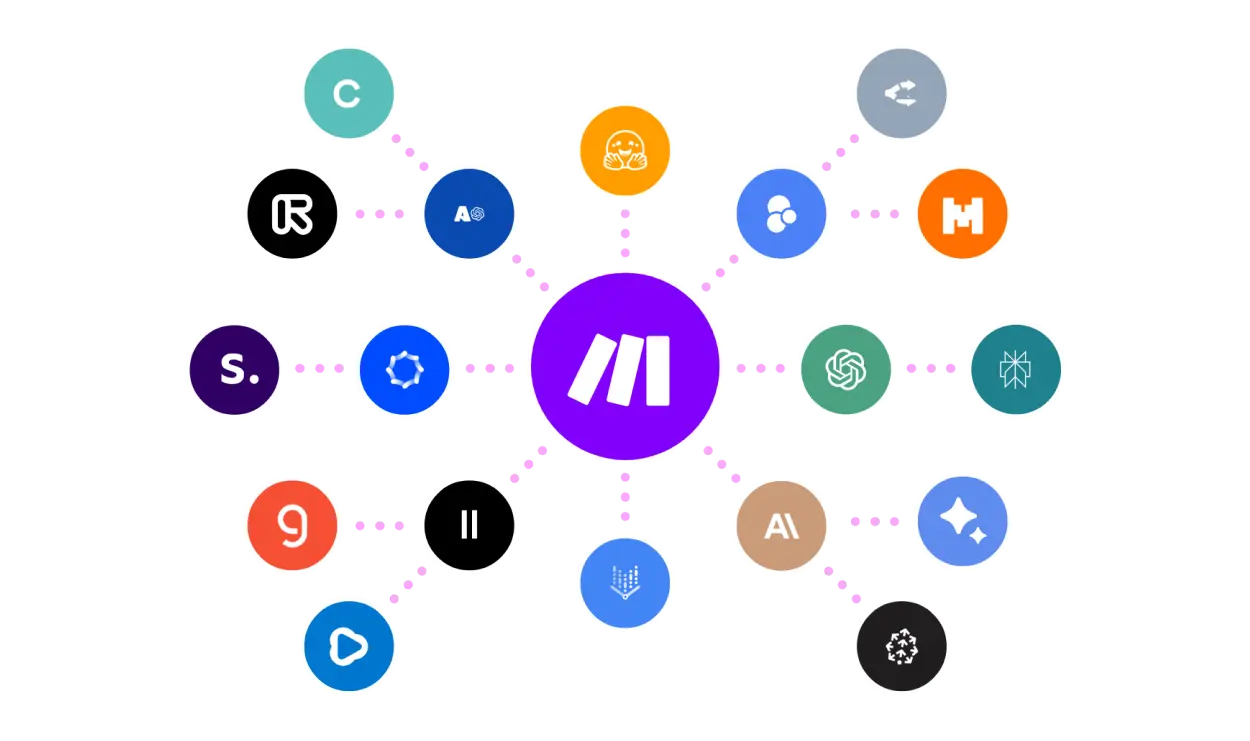Outbound Lead Generation: Boost Your Sales Pipeline
What is Outbound Lead Generation?
Outbound lead generation is a proactive sales strategy that involves initiating contact with potential customers who may not be familiar with your business or products. This approach contrasts with inbound lead generation, where leads come to you through content marketing and organic discovery.
In outbound lead generation, businesses actively seek out and engage prospects through methods like cold calling, email outreach, direct mail, and social media engagement. The goal is to create awareness, spark interest, and ultimately convert these prospects into customers.
One of the main advantages of outbound lead generation is the ability to target specific individuals or companies that match your ideal customer profile. This targeted approach allows businesses to focus their resources on high-potential leads, increasing the likelihood of conversion.
Why Outbound Lead Generation is Important
Outbound lead generation plays a critical role in accelerating business growth, especially for companies looking to scale quickly or enter new markets. By taking the initiative to reach out to prospects, businesses can build a more predictable and controllable sales pipeline. This strategy is particularly valuable in industries with long sales cycles or for businesses launching new products that may not yet have strong brand recognition.
Furthermore, outbound lead generation allows for immediate feedback. Sales teams can quickly assess the effectiveness of their outreach, adjust their messaging, and optimize their approach based on real-time interactions with prospects.
Methods of Outbound Lead Generation
Cold Calling: Despite being one of the oldest sales tactics, cold calling remains effective when done right. It’s essential to research prospects and personalize your pitch to address their specific needs or pain points.
Email Outreach: Email remains a cornerstone of outbound lead generation. Successful email outreach requires personalized, relevant content that resonates with the recipient, encouraging them to engage with your offer.
Social Selling: Platforms like LinkedIn provide opportunities for social selling, where businesses can connect with potential leads, share valuable content, and build relationships that may lead to sales.
Direct Mail: Though less common in the digital age, direct mail can still be a powerful tool in outbound lead generation, especially when used creatively and targeted to the right audience.
Outbound lead generation is not about volume; it’s about quality and relevance. By carefully selecting your target audience and crafting personalized messages, you can make outbound lead generation a highly effective part of your sales strategy.
Tools to Enhance Outbound Lead Generation
Effective outbound lead generation requires the right tools to streamline processes, track performance, and improve engagement. By leveraging these tools, businesses can enhance their outreach efforts, making them more efficient and effective.
Customer Relationship Management (CRM) Software
CRM software is essential for managing and organizing your outbound lead generation efforts. Tools like Salesforce and HubSpot CRM allow you to store contact information, track interactions, and manage follow-ups with prospects. These platforms also offer automation features that can help schedule emails, set reminders, and keep your sales team on track. A well-organized CRM system ensures that no lead falls through the cracks, allowing your team to focus on nurturing relationships and closing deals.
- Email Automation Platforms
Email outreach is a cornerstone of outbound lead generation, and email automation platforms like Mailchimp, Outreach.io, and SalesLoft can significantly enhance your efforts. These tools allow you to create personalized email sequences, track open and response rates, and automate follow-ups. By using email automation, you can reach a larger audience with tailored messages while saving time and maintaining consistency in your outreach.
- Lead Databases and Prospecting Tools
Finding the right contacts is crucial for successful outbound lead generation. Tools like ZoomInfo, LinkedIn Sales Navigator, and Clearbit provide access to vast databases of potential leads, complete with detailed information on company size, industry, and decision-makers. These tools allow you to segment your audience and tailor your outreach to the most promising prospects, increasing your chances of generating qualified leads.
- Social Selling Platforms
Social selling involves using social media platforms to connect with potential leads, and tools like LinkedIn Sales Navigator are specifically designed for this purpose. This tool helps sales professionals identify and engage with prospects by offering advanced search filters, lead recommendations, and the ability to track engagement. Using social selling tools can help build relationships with potential customers, making your outreach more personalized and effective.
- Analytics and Reporting Tools
To optimize your outbound lead generation efforts, it’s essential to track performance and analyze results. Analytics tools integrated within your CRM or standalone platforms like Google Analytics and Mixpanel can provide insights into how your outreach efforts are performing. These tools allow you to monitor key metrics like open rates, conversion rates, and ROI, helping you make data-driven decisions and continuously refine your strategy.
- Call Tracking and Dialer Software
For teams that rely heavily on phone outreach, call tracking and dialer software like RingCentral or PhoneBurner can be invaluable. These tools enable sales reps to make calls directly from their CRM, record conversations for quality assurance, and track the outcomes of each call. By integrating call tracking with your CRM, you can gain a clearer picture of your outbound efforts and improve your approach based on real-time feedback.
Best Practices for Successful Outbound Lead Generation
Outbound lead generation can be highly effective when approached with the right strategies and techniques. Implementing best practices helps maximize the return on your efforts, ensuring you reach and engage potential customers efficiently.
1. Understand Your Target Audience
Knowing who your ideal customers are is the foundation of any successful outbound lead generation campaign. Start by creating detailed buyer personas that include demographic information, pain points, and purchasing behaviors. This understanding allows you to tailor your messaging and outreach strategies to address the specific needs and challenges of your prospects, increasing the likelihood of conversion.
2. Personalize Your Outreach
Personalization is key to standing out in a crowded market. Whether through email, phone calls, or social media, tailor your communication to each prospect. Use their name, reference their company, and mention relevant details that show you’ve done your research. Personalized outreach demonstrates genuine interest and significantly improves engagement rates.
3. Leverage Multi-Channel Strategies
Relying on a single channel for outbound lead generation can limit your reach. Instead, adopt a multi-channel approach that includes cold calling, email outreach, social selling, and even direct mail when appropriate. Each channel offers unique advantages, and using a combination ensures you connect with prospects in the way that suits them best.
4. Create a Consistent Follow-Up Process
Persistence is crucial in outbound lead generation. Develop a structured follow-up process that includes multiple touchpoints over time. According to studies, it often takes several interactions before a lead converts, so consistent follow-up is essential. Use CRM systems to set reminders and track interactions to ensure no lead is left unattended.
5. Focus on Quality Over Quantity
While it might be tempting to cast a wide net, focusing on quality over quantity yields better results. It’s more effective to target a smaller group of well-researched, high-potential leads than to reach out to a large number of unqualified prospects. Quality leads are more likely to convert, leading to a higher return on investment for your outbound efforts.
6. Test and Optimize Your Messaging
Outbound lead generation requires continuous testing and optimization. Experiment with different messaging, subject lines, call scripts, and outreach times to see what resonates most with your audience. Use A/B testing to compare different approaches and refine your strategy based on the results. Optimization is an ongoing process that can significantly improve your campaign’s effectiveness.
7. Maintain Compliance with Regulations
Compliance with data protection regulations like GDPR and CAN-SPAM is critical in outbound lead generation. Ensure that your outreach methods and data handling practices adhere to these laws to avoid potential penalties and maintain trust with your prospects. Include clear opt-out options in your communications and respect requests to unsubscribe.
8. Use Data to Drive Decisions
Data should be at the heart of your outbound lead generation strategy. Track key metrics such as open rates, response rates, and conversion rates to assess the performance of your campaigns. Analyzing this data helps identify what’s working and what needs improvement, allowing you to make informed decisions that enhance your overall strategy.
Measuring the Success of Your Outbound Lead Generation Efforts
Measuring the success of your outbound lead generation efforts is crucial for understanding what works, optimizing your strategy, and ensuring a strong return on investment. By tracking the right metrics, you can gain valuable insights into the effectiveness of your campaigns and make data-driven decisions to improve results.
1. Response Rate
The response rate measures the percentage of prospects who engage with your initial outreach, whether through email replies, returned calls, or social media interactions. A high response rate indicates that your messaging resonates with your target audience and that you’re reaching the right people. To improve response rates, continually test different messaging strategies, personalization techniques, and outreach channels.
2. Conversion Rate
The conversion rate is the percentage of leads who take a desired action after your outreach, such as scheduling a meeting, requesting more information, or making a purchase. This metric is a direct indicator of how effective your outbound lead generation efforts are at turning prospects into customers. To boost conversion rates, focus on the quality of your leads, the relevance of your offers, and the persuasiveness of your calls to action.
3. Cost Per Lead (CPL)
Cost per lead (CPL) is the total cost of your outbound lead generation efforts divided by the number of leads generated. This metric helps you assess the efficiency of your campaign and determine whether your efforts are cost-effective. A lower CPL means you’re generating leads at a lower cost, which is especially important for maintaining a healthy profit margin. To reduce CPL, optimize your targeting, streamline your processes, and leverage automation tools.
4. Lead Quality
Lead quality is a measure of how likely a lead is to convert into a customer. While it can be subjective, lead quality is often assessed through factors like the prospect’s fit with your ideal customer profile, their engagement level, and their position in the decision-making process. High-quality leads are more valuable as they require less nurturing to convert. Use scoring systems to rank leads and prioritize those most likely to convert.
5. Sales Cycle Length
The sales cycle length is the average time it takes to convert a lead from initial contact to closing the deal. Shorter sales cycles often indicate a well-targeted and efficient outbound lead generation process. If your sales cycle is longer than expected, it might suggest a need to refine your lead qualification process or improve your follow-up strategies.
6. Return on Investment (ROI)
Return on investment (ROI) is perhaps the most critical metric, measuring the overall profitability of your efforts. Calculate ROI by comparing the revenue generated from leads with the total cost of your campaigns. A positive ROI indicates that your outbound lead generation efforts are paying off, while a negative ROI suggests the need for adjustments in strategy or execution.
7. Engagement Metrics
Engagement metrics, such as email open rates, click-through rates, and social media interactions, provide insights into how your audience is interacting with your content and outreach efforts. High engagement levels often lead to better response and conversion rates. To improve these metrics, ensure your content is relevant, engaging, and tailored to the interests of your target audience.
8. Customer Acquisition Cost (CAC)
Customer acquisition cost (CAC) measures the total cost of acquiring a new customer, including all sales and marketing expenses. By comparing CAC to the lifetime value of a customer (LTV), you can assess the long-term profitability of your outbound lead generation efforts. Lowering CAC while maintaining or increasing LTV is a key goal for sustainable growth.
Conclusion
Outbound lead generation remains a powerful tool for businesses looking to proactively reach and engage potential customers. By implementing the right strategies, utilizing effective tools, and adhering to best practices, companies can build a robust pipeline of qualified leads that drive growth and revenue.
One of the key advantages of outbound lead generation is the control it offers over the sales process. Unlike inbound methods, which rely on prospects finding you, outbound strategies allow you to target specific audiences, ensuring your message reaches those most likely to benefit from your products or services. This targeted approach not only enhances the efficiency of your lead generation efforts but also improves the quality of leads, increasing the likelihood of conversion.
Measuring the success of your campaigns is essential to understanding their impact and optimizing future efforts. By tracking metrics such as response rates, conversion rates, and return on investment, you can gain valuable insights into what’s working and where improvements are needed. Regular analysis and refinement of your strategies will help ensure that your outbound lead generation efforts continue to deliver strong results.
In a competitive business environment, outbound lead generation provides the opportunity to stay ahead by actively pursuing growth. By combining strategic outreach with data-driven insights, you can enhance your sales pipeline, engage with high-potential prospects, and ultimately drive your business forward.
For businesses looking to maximize the effectiveness of their outbound lead generation, leveraging the latest tools and techniques is crucial. Whether it’s through personalized email campaigns, targeted social selling, or comprehensive CRM systems, the right tools can streamline your efforts and boost your results.
In conclusion, outbound lead generation is an essential component of a well-rounded sales strategy. By understanding its principles, applying best practices, and continually measuring and refining your approach, you can create a successful outbound lead generation system that fuels long-term business success.




